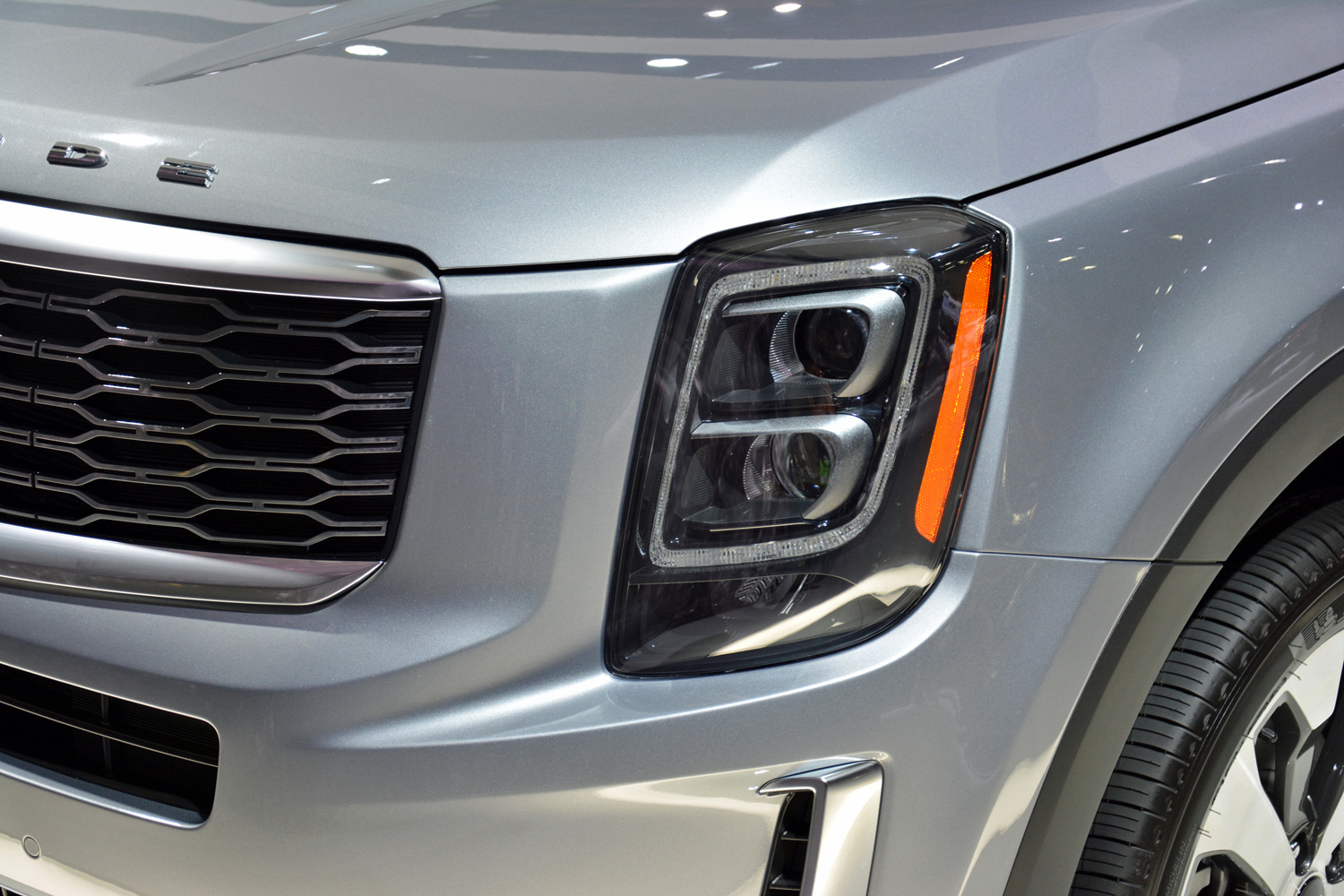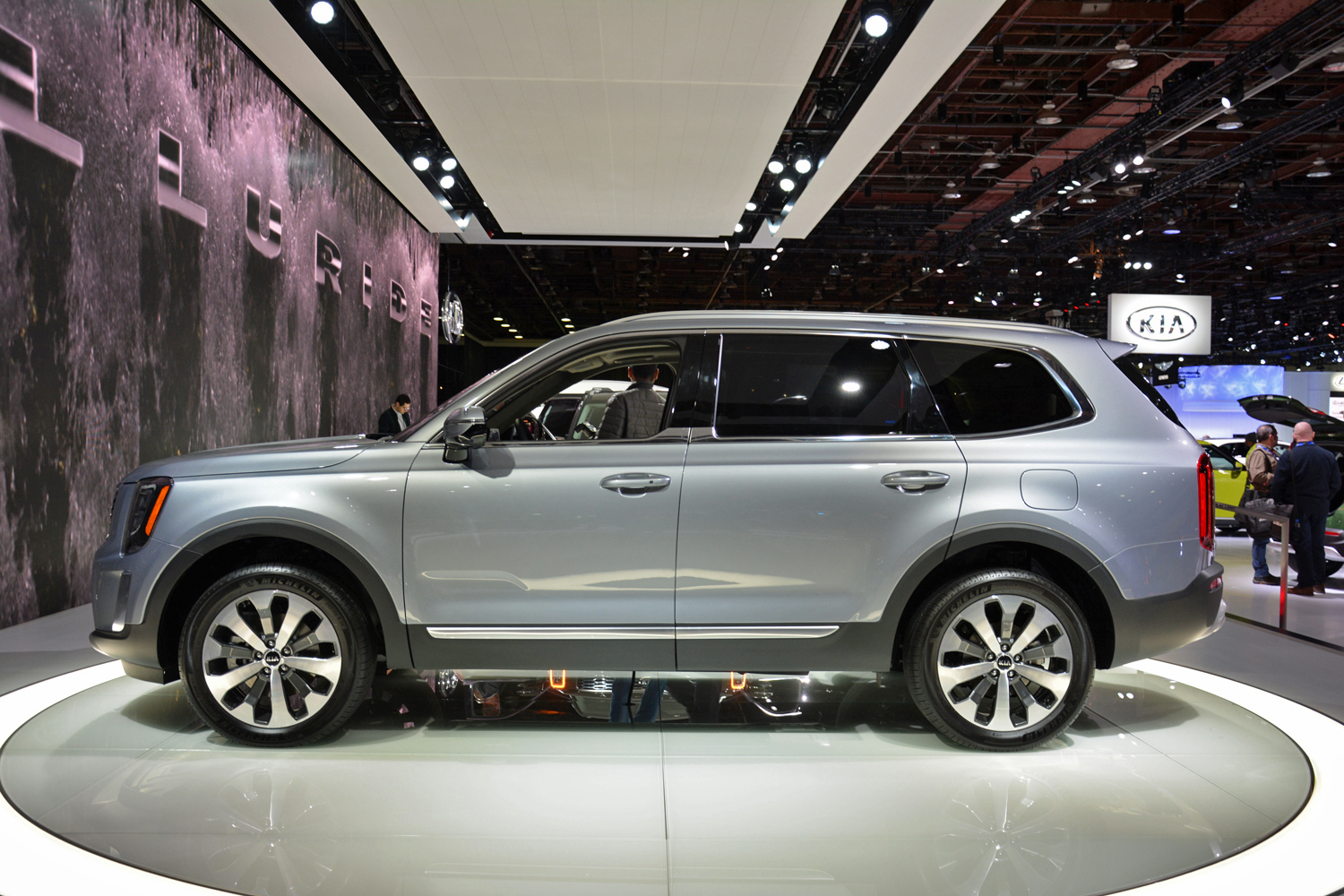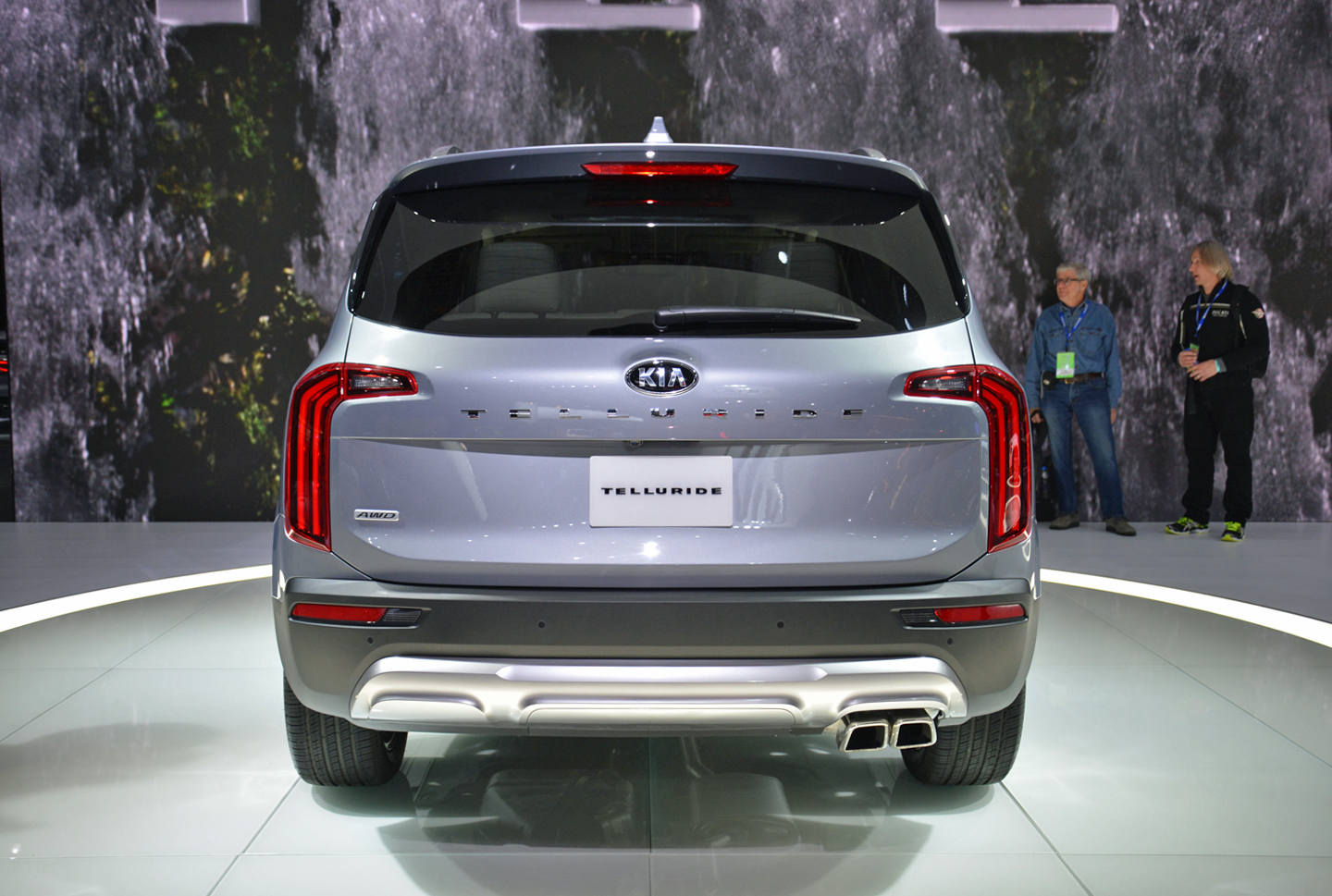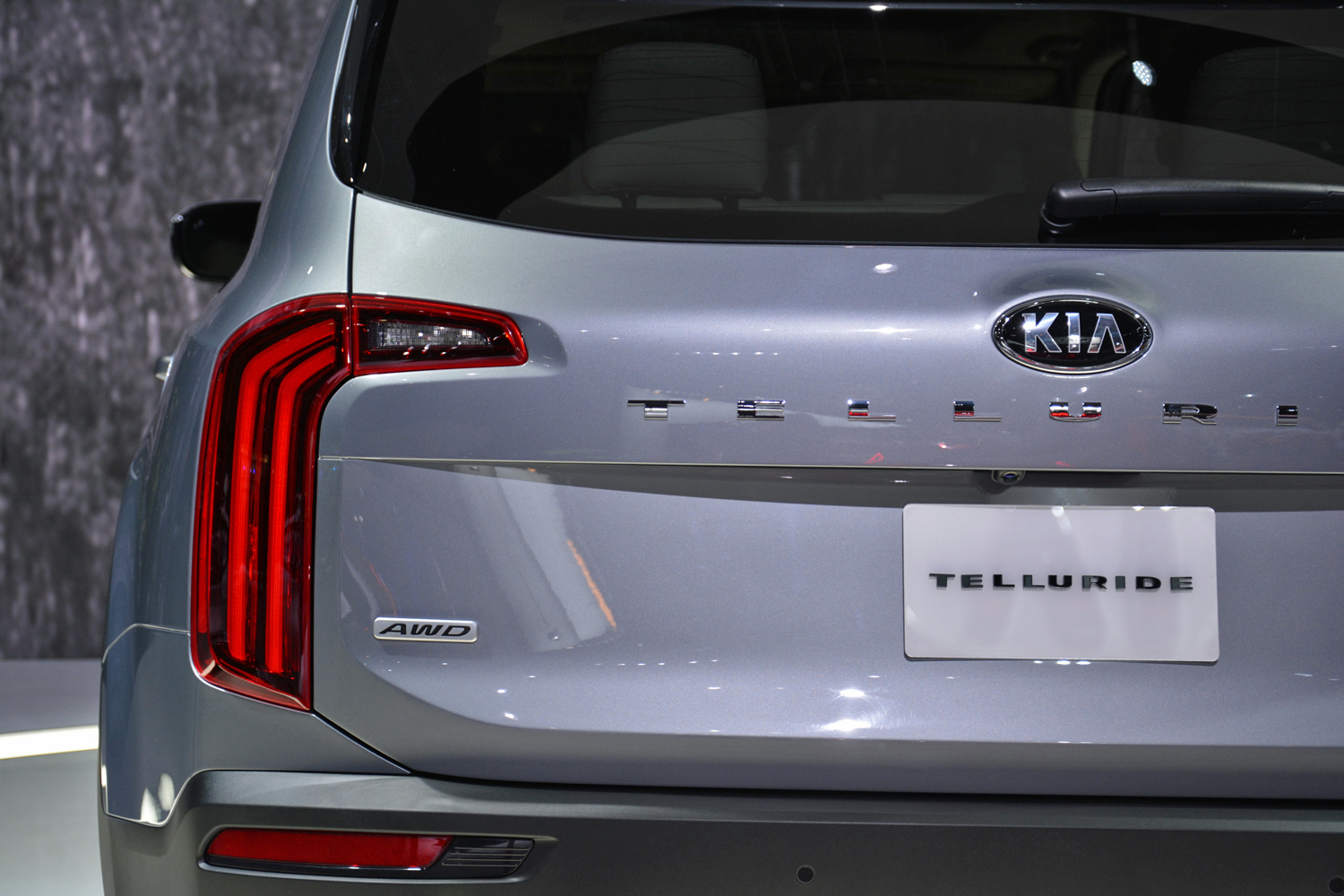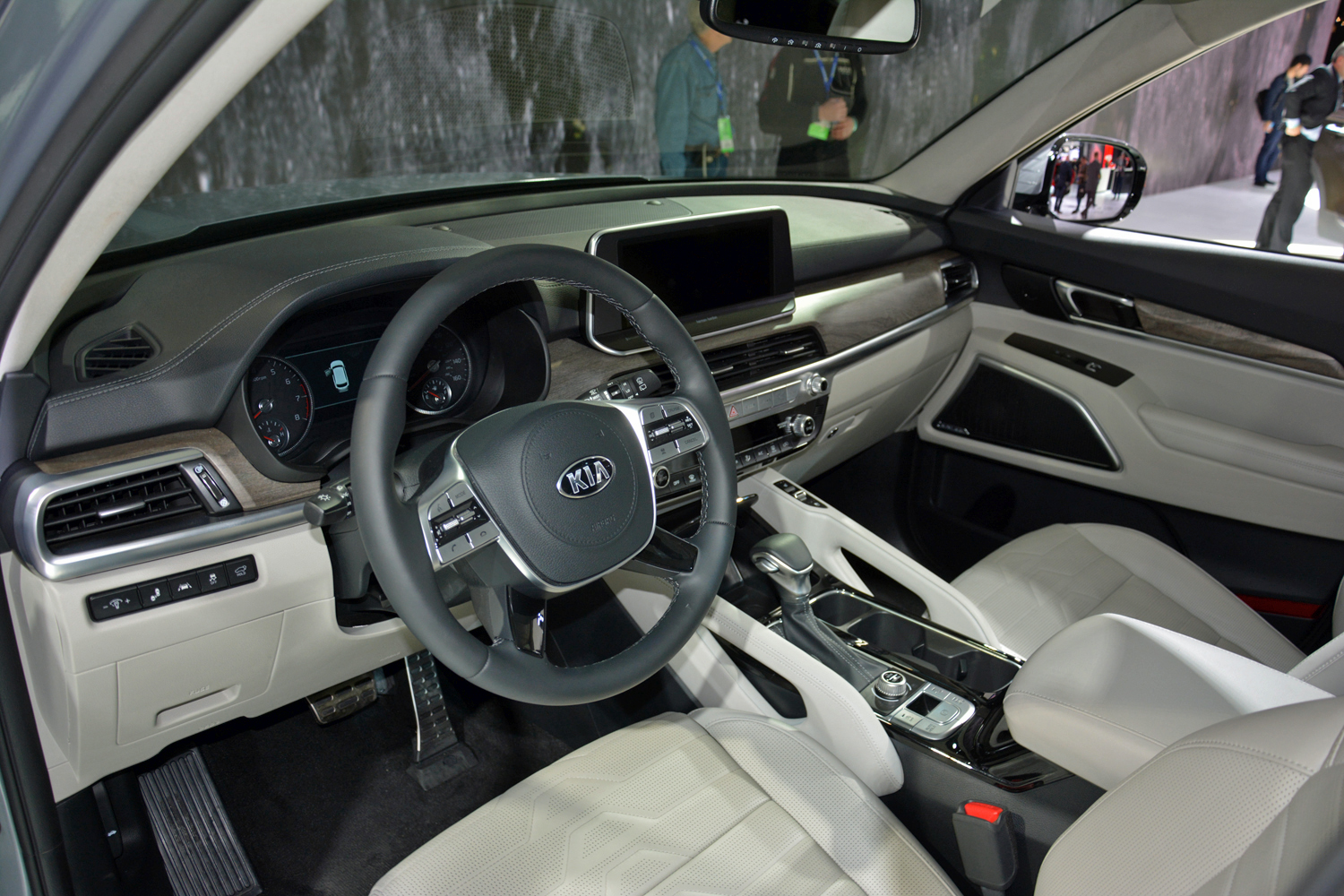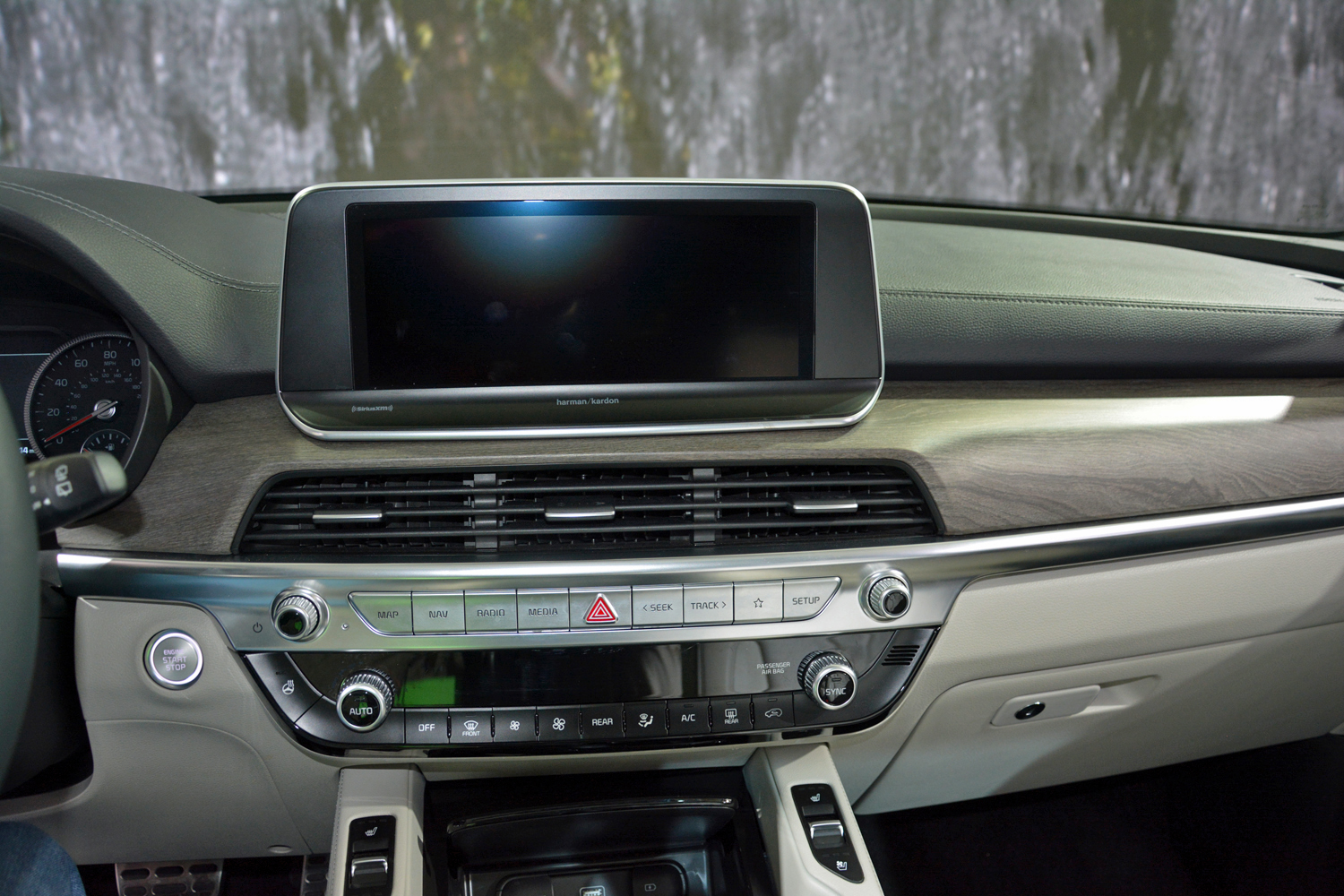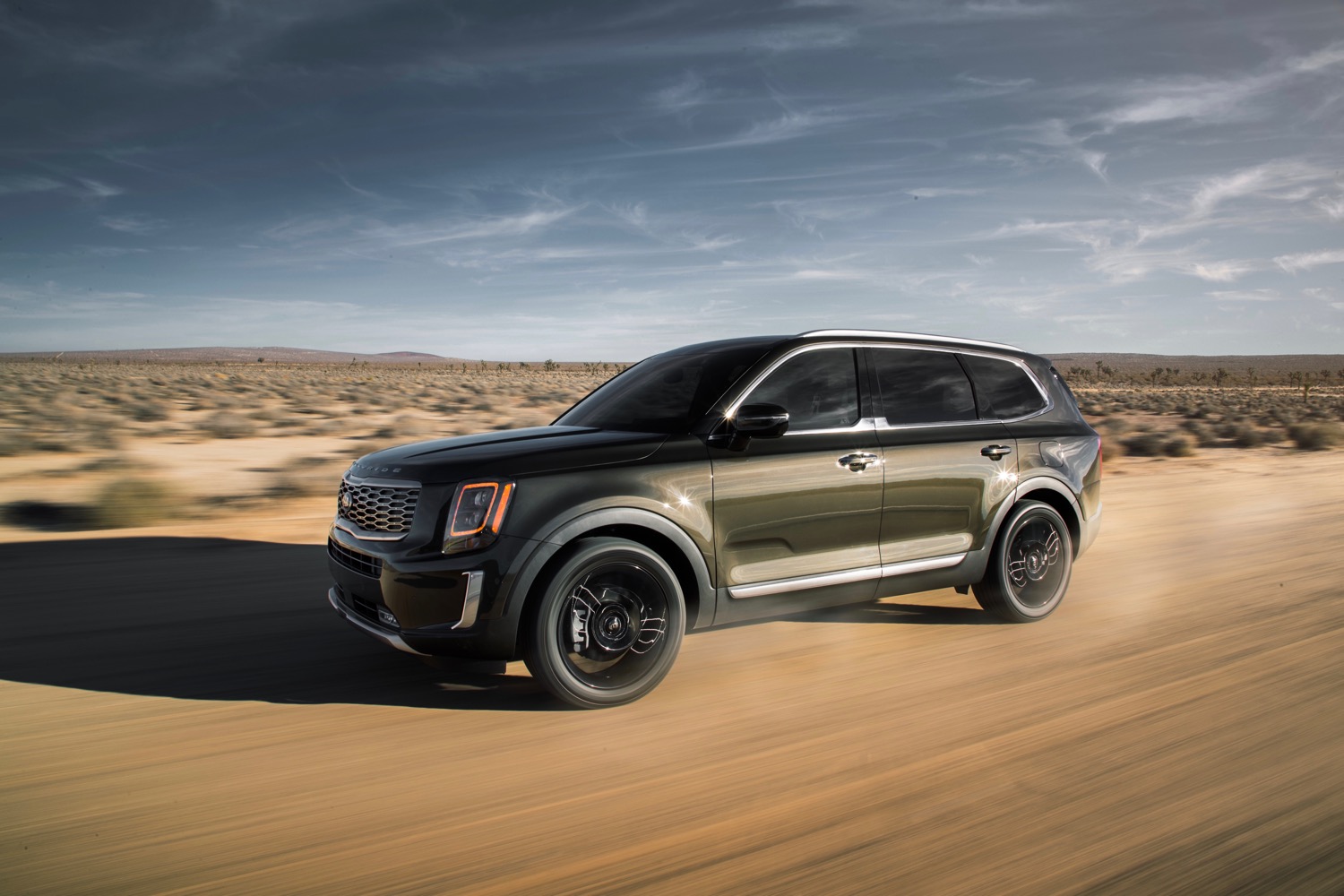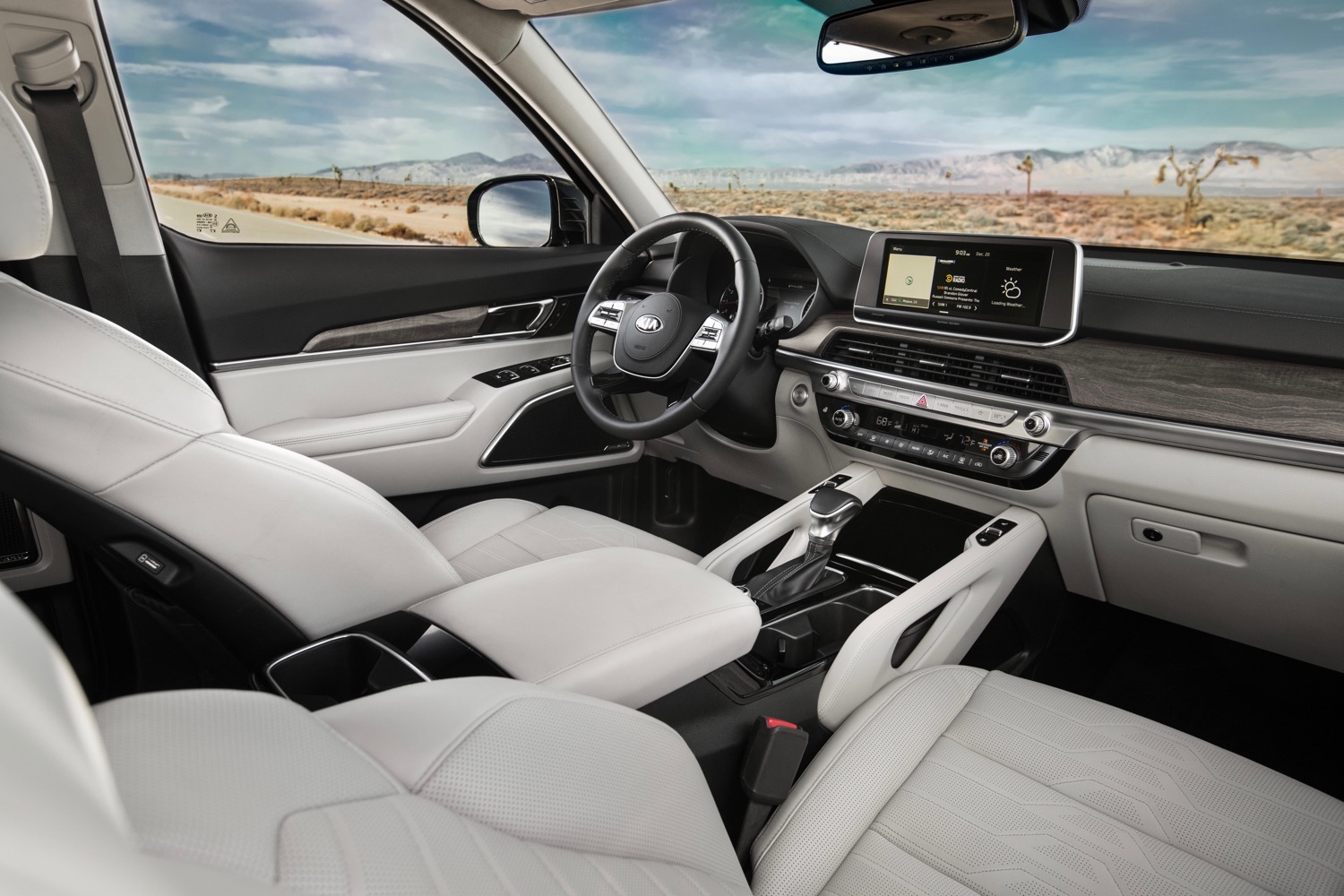Planet-saving electric cars may be the future, but the present is all about crossovers and SUVs. That’s why Kia chose the 2019 Detroit Auto Show to launch its largest-ever vehicle. Behold the three-row, eight-passenger 2020 Telluride.
This is actually the third time we’ve seen the 2020 Kia Telluride. Kia brought a near-production-ready example to New York Fashion Week in September and the Telluride hasn’t changed much from the original concept version that debuted at the 2016 Detroit Auto Show. The boxy shape screams SUV.
The Telluride aims to improve on the track record of Kia’s last big SUV, the Borrego. That model launched in 2009 in the midst of the financial crisis and high gas prices, so it was a sales dud. This time around, demand for SUVs seems more robust, so it’s not surprising that Kia is trying again. The Telluride also shares a basic platform with the Hyundai Palisade, so development costs are spread out over more vehicles.
While the Borrego was available with a gas-guzzling V8 engine, the Telluride goes V6 only in a nod toward fuel economy. The 3.8-liter V6 produces 291 horsepower and 262 pound-feet of torque. It’s connected to an eight-speed automatic transmission with standard front-wheel drive or optional all-wheel drive. Kia claims the Telluride will tow up to 5,000 pounds when properly equipped.
It may be a Kia, but interior features like Nappa leather upholstery and reclining third-row seats aim to give the Telluride an air of luxury. The big SUV is also available with a 10.25-inch touchscreen infotainment system (compatible with Apple CarPlay and Android Auto), 630-watt, 10-speaker Harman/Kardon audio system (with a “quiet mode” that cuts output in the second and third rows), a head-up display, and six USB ports (five are standard).
A host of driver aids are on the menu as well. In addition to expected features like adaptive cruise control and blind spot monitoring, the Telluride is available with Kia’s Highway Driving Assist. This uses radar and lidar to scan the road ahead in order to keep the car centered in its lane while following a vehicle ahead. Safe Exit Assist will prevent the child locks from being deactivated if the system detects an object approaching from the rear. Kia is also the latest automaker to incorporate a feature designed to prevent drivers to children or pets from being left unattended in the rear seats.
Pricing for the 2020 Kia Telluride will be revealed closer to the SUV’s on-sale date later this year. Considering that Kia’s largest current utility vehicle, the seven-seat Sorento, can push $45,000, the Telluride could very well end up in luxury-car territory alongside the Kia K900 sedan.
Editors' Recommendations
- Pint-sized 2021 Kia Seltos crossover could be a great tech value
- 2020 Audi E-Tron Sportback, RS Q8 confirmed for 2019 LA Auto Show
- Volkswagen aims for value with its updated 2020 Passat sedan

